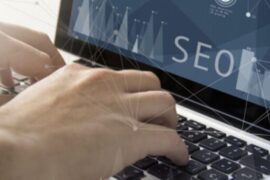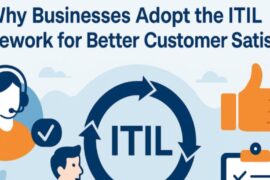Designing for the Rush
UX Patterns That Keep Revenue Flowing During Traffic Spikes
When a post goes viral or a creator shouts you out, design gets battlefield-tested in real time. Pages that felt smooth at 2,000 sessions/day can stumble at 20,000, and what looks like a marketing problem is often a UX and coordination problem. Teams that stay calm do two things well: they plan the interface for bursts, and they steer tiny changes live while the crowd is still on the page. A single source of truth and live scheduling backbone such as https://shifton.com/ helps the team coordinate safely while UX keeps people in flow.
1. Preempt confusion with “micro-truths” above the fold
In a rush, people scan. Put the one sentence that prevents 80% of questions right where eyes land:
- “Discount applies at checkout, not on the product page.”
- “Order by 5 pm for same-day dispatch.”
- “Free returns on sale items.”
Treat it like a sticky micro-FAQ. It’s not branding poetry; it’s conversion insurance. Keep the message short (≤120 characters), readable on mobile, and visible without scrolling.
2. Build safe banners and link hygiene (so your traffic doesn’t fall into holes)
Most spike-day damage comes from logistics, not aesthetics: broken slugs, stale UTMs, or a hero banner that points to a page you hot-fixed five minutes ago.
- Keep one canonical link sheet for all live URLs/UTMs; version it and pre-test from a clean device.
- Prepare shadow landing pages with the same offer in case you need to swap quickly.
- Use timeboxed banners that can be flipped globally from one control (no “15 editors, 15 versions” chaos).
Design tip: use a subtle “handoff” animation (fade/slide 150–200ms) when a banner updates; it reduces perceived jank while you switch links.
3. Stabilize checkout with friction-reducing microcopy
In a spike, impatience is the enemy. Neutral, precise microcopy prevents rage-clicks:
- Promo entry: “Code applies once per order” + “Apply” state change (from gray to brand color) with a small checkmark on success.
- Wallet retries: if a PSP blips, show a one-line explainer (“If Apple Pay fails, choose card and we’ll keep your discount”).
- Shipping math: surface cutoffs inline: “Arrives Tue–Wed (order in 02:17).”
Avoid blamey words (“failed,” “invalid”) and use suggested next steps instead (“Try card • Keep discount • View FAQs”).
4. Give social and support a design lane
Design doesn’t stop at pages. When comments explode, your public surfaces need tools:
- Pin-able answer blocks in the layout (closer to comments/reviews) so a moderator can anchor the right clarification.
- Badge for official responses (“Team” or “Store”) to reduce “who to trust?” friction.
- Rate-limit affordance (subtle “slow mode” notice) to keep threads readable when bots swarm.
These tiny affordances are UX, not moderation magic; they keep newcomers oriented and reduce abandonment.
5. Prepare substitutes and “soft redirects” for low stock
Nothing kills momentum like an empty hero SKU. Solve with design + rules:
- Show soft substitutes inline (“Often bought instead”) with real inventory.
- If a SKU hits the safety floor, redirect to a bundle landing page that preserves the promise (“Same discount. Ships today.”).
- Make the redirect polite (fade + message), not jarring—avoid hard 404s at all costs.
6. A minute-12 case: the code storm
A mid-market brand promoted “BUYMORE20” during a live segment. At minute 12, comments filled with “code not working.”
What worked:
- Sticky micro-truth: “Discount applies at checkout.”
- Fast banner swap: product → cart-first tutorial landing (30-second scroll).
- Checkout microcopy: on wallet errors, “Choose card — we’ll keep your 20% automatically.”
- Substitutes card appeared when the hero size hit its threshold.
Conversions stabilized in eight minutes without a tone-deaf apology post. Most of the rescue was design hygiene, not heroics.
7. Your spike-ready checklist (steal this)
Before launch
- One canonical link/UTM sheet; clean-device test.
- Shadow landing page with identical offer and clear scroll path.
- Micro-FAQ line and pin-able clarification ready.
- Substitute bundles and thresholds configured.
During the wave
- Watch cart→payment drop-off and oldest waiting in support; change one thing at a time (banner, line, button label).
- If errors cluster, swap message > layout first; it’s the highest-leverage fix.
After the echo
- Screenshot the top 3 moments that reduced confusion; turn them into templates.
- Kill everything no one clicked.
8. Design mindset for high-variance traffic
- Clarity over cleverness. Micro-truths beat brand lines.
- Reversible moves. Prefer swaps you can undo in 10 seconds.
- Predictable motion. If you must change layout mid-wave, animate gently.
- One source of truth. Design, content, and ops should update the same object, not 12 versions of it.
Rushes are not punishments; they’re audits. Good UX turns them into proof that your brand is trustworthy under pressure. Prep the messages, stage the alternates, and give your team a safe way to steer while the feed is still hot—and you’ll keep the revenue stream unbroken.































